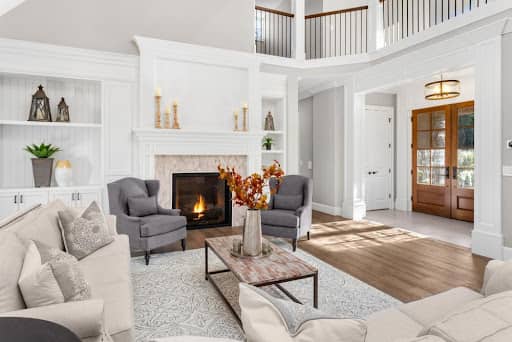
When you sell your home, any furnishings attached to it are up for sale, too. But, what about all that furniture that’s unattached? What do you do with all the couches, chairs, rugs, lamps, and free-standing cabinets and shelves?
Do you try to take it all with you, or do you sell it with the home? If you want to sell your home at least partly furnished, then you’ll want to know these tips for how to include furniture in the sale of a home.
Tips For Pricing Furniture When Selling Home
1. Identify Furniture Worth Selling
There are two key points in this tip: First, you need to identify which items qualify as furniture; then, you need to determine which of those items are actually worth selling. Not all contents of your home are furniture, and not all furniture will interest a buyer.
Furniture consists, first and foremost, of movable objects. Fixtures attached to walls and ceilings are not furniture, and they come with the sale of the house anyway.
Furniture is also defined by how it’s used — or the fact that it’s used — to support the human activities of living and working. This includes items for:
1. Eating, like dining tables
2. Working, like desks
3. Seating, like sofa and chairs
4. Storage, like freestanding bookshelves or a chest of drawers
5. Sleeping, like beds
Whether or not the furniture you identify qualifies for sale with Kiawah Island real estate or homes in other areas now depends on several other factors.
2. Be Sure You Really Want to Sell It
After following the previous tip, you may have identified furniture worth selling, but is it furniture you want to sell? That’s the next thing to ask yourself. Here are a few questions to consider to get to the heart of your decision:
1. Would it be cost-prohibitive or too much of an inconvenience to move, resell or store the furniture after you sell your home?
2. Would buyers find it appealing, or would it detract from their ability to envision themselves personalizing the space?
3. Do you need the furniture or rather, need to get rid of it, such as if you’re downsizing with this move?
4. Could you sell certain pieces for a higher price elsewhere, such as to a private party or at an auction?
3. Determine the Appropriate Price to Charge
People are naturally inclined to place a higher value on the belongings they’ve purchased with their hard-earned money.
That’s why, when you sell furniture included with Folly Beach homes for sale, you need to prepare to receive much less for that furniture than you feel it’s worth.
First, price the home without the furniture. Then, when considering the premium to ask for the added furniture, be sure to account for the discount you’re willing to offer on the price you paid for the furniture or even its current retail price if purchased now.
Determining what sort of discount to offer on your furniture requires getting an idea of the pieces’ current value. Dig up any receipts you have to find out what you paid for the item.
For other items, you may be able to find the price on your credit card receipts. With an idea of the price you paid in mind, here are some pointers to help you research your furniture’s value:
1. Consider its design style, age, and condition.
2. Compare prices on online marketplaces like eBay and Craigslist.
3. Check antique price guides and the websites of auction houses to see if your piece has special value.
4. Employ the services of a furniture appraiser.
4. Be Open to Negotiation
The follow-up to that last tip is to be willing to negotiate with an interested buyer.
Even though you’re already asking for less than you feel you deserve for that furniture, if you’re too inflexible on this price, you may lose the sale altogether. Here are some useful negotiation tips to consider:
1. Try to view it from the buyer’s perspective.
2. Account for current housing market conditions.
3. Use the furniture to help sell the “dream” of living in the home.
Ultimately, it will be your real estate agent who does the actual negotiating for you. As your representative, the agent will bring the buyer’s offer and counteroffers to you for your consideration.
When you accept, refuse or counter, your agent will take the information back to the buyer or buyer’s agent.
5. Structure the Sale to Your Advantage
Finally, there are several ways to structure the sale of furniture with your home. Briefly, here are the three main options you have to choose from when structuring the sale of a home with furniture:
1. Package the sale of the property and furniture together, otherwise known as selling a “turnkey property.” This is most likely to appeal to an affluent buyer in a luxury market.
2. Itemize the furniture as a concession to the sale.
3. Sell the home and the furniture in two completely separate transactions.
Ready to Sell Your Furnished Home?
Maybe you’re not able to take all your furniture with you when you move. Maybe you want to try to get a higher price for your home.
Whatever the motivation, you can solve the problem and make the sale of your home and your subsequent move easier and potentially more profitable once you understand how to include furniture in the sale of a home.